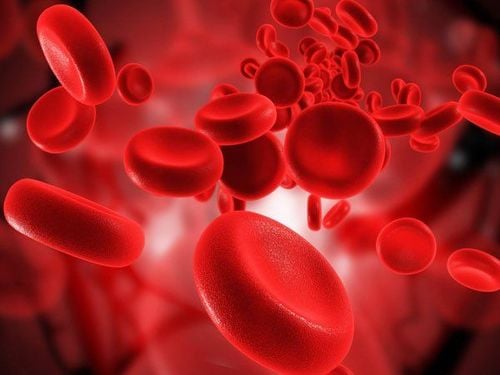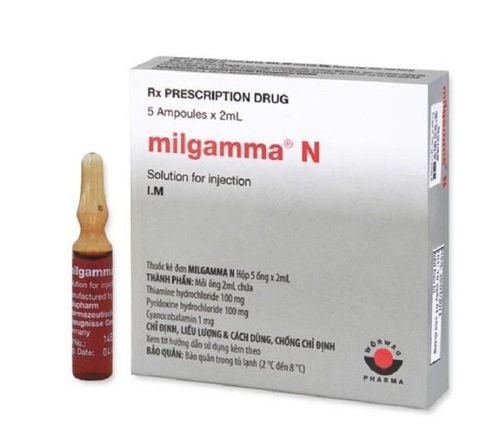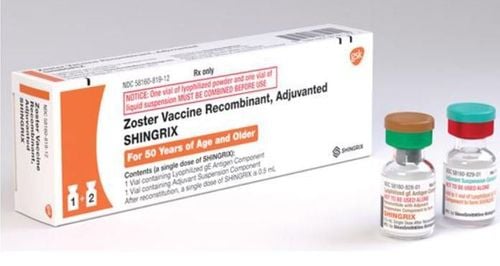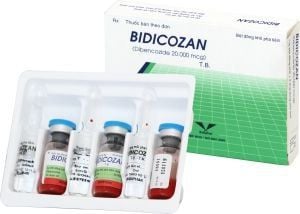This is an automatically translated article.
Orlacmin belongs to the group of vitamin and mineral supplements with the main ingredients including vitamins B1, B6, B12. The drug is often used to treat vitamin B deficiency or headaches, weakness in children, growth retardation.1. Uses of Orlacmin
Orlacmin medicine contains the main ingredients are B vitamins such as B1, B6, B12 with the following specific effects:
Vitamin B1: is an essential nutrient for the functioning of all body tissues because it creates adenosine triphosphate (ATP) helps transport energy inside cells. In terms of pharmacokinetics, vitamin B1 is easily absorbed from the gastrointestinal tract and excreted in the urine; Vitamin B6: plays an essential role in a wide range of physical and psychological functions of the body, helping to maintain nerve function, liver function, metabolism, boosting energy as well as good for skin, hair and skin. nail. In terms of pharmacokinetics, vitamin B6 is rapidly absorbed from the gastrointestinal tract, mostly stored in the liver and partly in muscle and brain, and finally eliminated mainly by the kidneys as metabolites; Vitamin B12 : plays an essential role in red blood cell formation, cell metabolism, nerve function and DNA production Orlacmin is usually indicated in the following cases:
Vitamin B deficiency; Headaches, children with weakness, slow growth; Nervous system disorders such as neuralgia, peripheral neuritis, optic neuritis, diabetic and alcoholic neuritis; Polyneuritis, sciatica , convulsions due to increased induction of the central nervous system; Shingles ; Prophylaxis and treatment of vomiting and nausea during pregnancy; Anemia due to deficiency of vitamin B6, vitamin B12; Recover and maintain health after recovering from illness, overwork or old age. Contraindications of Orlacmin include:
Patients with hypersensitivity to vitamins B1, B6 and B12 of Orlacmin; Malignant tumor; Patients with atopic allergies (asthma, eczema).
2. Dosage of Orlacmin
Depending on the subjects and treatment goals, the dosage of Orlacmin will be different, specifically as follows:
Adults: 1 tablet/time x 2 times/day; Children over 12 years old: 1 tablet x 1 time/day; Change the dose depending on your doctor's instructions. Patients who take an overdose of vitamin B6 such as high doses of 2-7g/day or over 0.2g/day for more than 2 months will progress to sensory neuropathy with symptoms of ataxia and numbness of the limbs. Symptoms resolved 6 months after discontinuation of the drug.
3. Orlacmin side effects
In some patients when using Orlacmin, side effects may occur such as:
Vitamin B1: may cause hypersensitivity reactions, tingling sensation, itching, soreness, urticaria, sweating, insomnia, throat congestion, angioedema, respiratory failure, cyanosis, pulmonary edema, gastrointestinal bleeding, vasodilatation and transient hypotension, cardiovascular collapse and death; Vitamin B6: exacerbation of peripheral neuropathy at high doses; Vitamin B12: dizziness, headache, fatigue, nausea, vomiting.
4. Be careful when using Orlacmin
Some general notes when using Orlacmin include:
The efficacy and safety of Orlacmin has not been evaluated in children under 12 years of age; Do not use Orlacmin for pregnant women because it can cause drug poisoning in babies; Orlacmin should be used with caution in lactating women because vitamin B6 can inhibit lactation by blocking the action of prolactin; Vitamin B1 in Orlacmin may increase the effects of neuromuscular blocking drugs; Vitamin B6 in Orlacmin may decrease the effectiveness of Levodopa, but this interaction does not occur if a dopa decarboxylase inhibitor is used; Vitamin B6 can reduce the activity of altretamine, reduce the concentration of phenobarbital and phenytoin in the serum; Certain medications can increase vitamin B6 requirements such as Hydralazine, Isoniazid, Penicillamine and oral contraceptives. Above is information about the uses, dosage and precautions when using Orlacmin. Patients should carefully read the instructions for use, consult a doctor before use to ensure the effectiveness of treatment.













